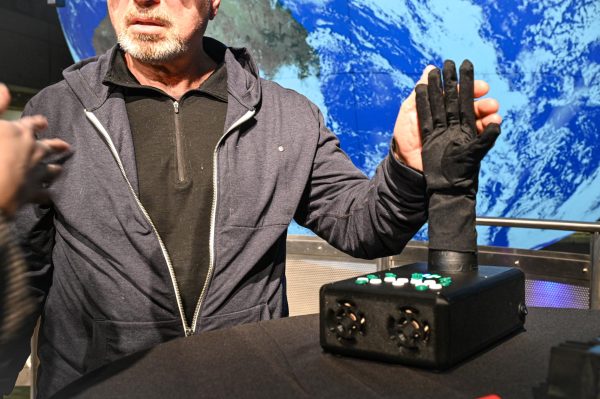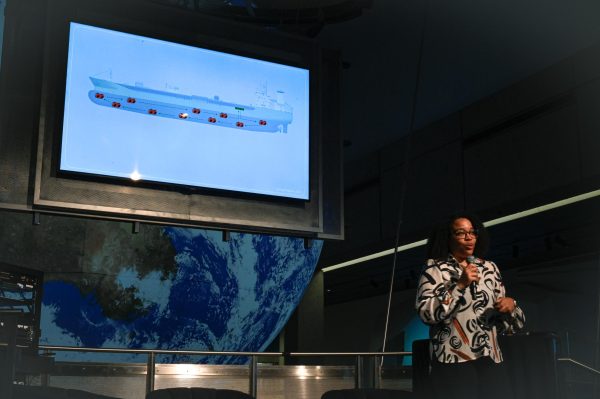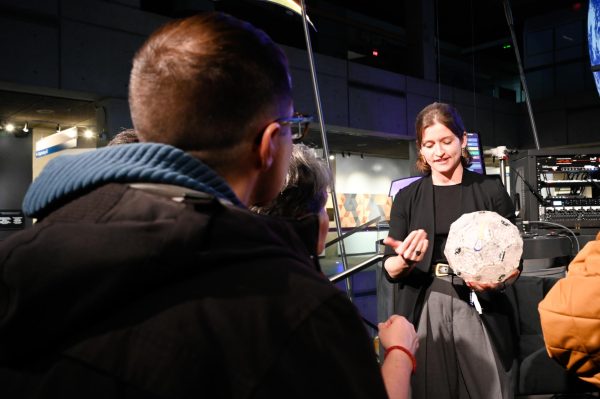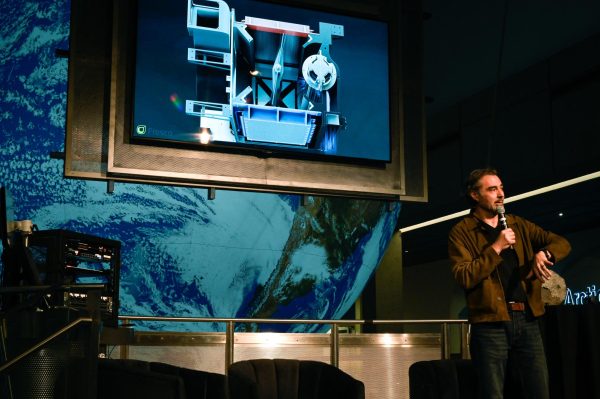Boston was the scene of many ÔÇťfirstsÔÇŁ for the United States.┬á
From the first newspaper in the Thirteen Colonies to discovering the inoculation for smallpox, many inventions that modern day Americans enjoy were created in Massachusetts around the time of the Revolutionary War.
As the country gears up to celebrate the 250th anniversary of signing the Declaration of Independence in 2026, the Museum of Science hosted Scott Kirsner, the creator of the digital Innovation Trail; Robert Allison, a professor at Suffolk University and chair of Revolution250; and Jazz Dottin, the creator and host of the historical YouTube channel, Black Gems Unearthed asking the question: ÔÇťWhat was it about the Revolutionary War that created such a fertile environment for innovation in Boston and Cambridge?ÔÇŁ
After the discussion, the crowd heard from Boston and Cambridge innovation companies and nonprofits working on solutions for better climate technology, accessibility systems, and life sciences.
Boston innovation then
A theme of the event was that many famous innovations made in the Commonwealth came from necessity to advance technology and education for the war and American independence from the British, giving way for the ecosystem of now over 100 colleges and research institutions and over 1,000 biotech companies statewide.
ÔÇťBoston, we were founded by Puritans, and they really found education to be important,ÔÇŁ Allison said.
Perhaps one of the oldest examples of Boston innovation is the oldest school in America, Boston Latin School. Founded in 1635, one year before Harvard, Allsion explained the Ivy League institution was originally founded for graduates of Boston Latin, and laid the groundwork for Cambridge to become a world-renowned city of research and study. 
James Winthrop, the first governor of Massachusetts, was himself a Harvard professor and mathematician, but he was also a devout Puritan, said Allison. 
Not even fifty years after the Revolution, Massachusetts General Hospital was founded in 1821 by a man whose family were Revolutionaries. The hospital would demonstrate the first surgical anesthesia procedure 25 years later, and Mass General has been the site for countless medical advancements since.
ÔÇťMost hospitals in the 18th century were places where you went to die, the idea behind Mass General was it was the place you go to get better,ÔÇŁ said Allison.
Kirsner also said Boston was most successful when it promoted the work of all people. Dottin highlighted the inception of modern-day vaccination by the person known as Onisemus and his enslaver, Cotton Mather. 
After a smallpox outbreak in Boston in the early 1700s, Onisemus introduced Mather and another local doctor to the technique of variolation. After much pushback, the practice spread throughout the Colonies and would later lead to vaccination.
ÔÇťTo take the advice of an enslaved Black man at the time was just crazyÔÇöbut he was right,ÔÇŁ said Dottin.
The trio agreed that Boston was ÔÇťat its bestÔÇŁ when it was not afraid to push the boundaries of humanity, and that its origins as a seedbed for education provided a uniquely rich foundation for technological exploration now.┬á
In reference to recent National Institute of Health funding cuts by the Trump administration that many prestigious research universities in the area receive research grants from, one crowd member asked the trio ÔÇťwhat current Massachusetts residents can do to create a counter revolution?ÔÇŁ
Allison cautioned against the idea of relying on federal funding for scientific inquiry, but said ÔÇťyou canÔÇÖt have a scientific environment if people are afraid to speak their mind.ÔÇŁ┬á
Kirsner agreed with Allison but also acknowledged that federal assistance in higher education goes back to the beginning of the Commonwealth and helped start MIT, for example, which is a land grant university.
ÔÇťWhat weÔÇÖve talked about tonight is that [Boston has] occupied the cutting edge of solving the next problem, whether itÔÇÖs a societal problem, a medical problemÔÇölike learning itÔÇÖs better to knock people out before you cut them open,ÔÇŁ Kirsner added. ÔÇťI think we have a lot more of that in us, but I worry about saying ÔÇśWeÔÇÖre going to do that for the next 50 years with zero federal dollars.ÔÇŁ
Capping the discussion, the crowd got out the phones and played Boston history trivia led by Kirsner with some commentary after each question. They laughed as he threw mini boxes of Junior Mints and Sugar Babies to them after one question revealed that the candies have been made daily in the Cambridge Brands factory since 1949, just a short walk from the MIT campus.
Revolutionary innovations at work today
After the historical discussion ended, the museum invited four Boston-area representatives and founders from current ÔÇťrevolutionaryÔÇŁ innovation teams from different varying industries that represent current and future industries of innovation.

Samantha Johnson, founder and CEO of Tatum Robotics, demonstrated the Tatum T1, a robotic communication system for people who are deaf and blind that uses natural tactile sign language. The T1 is a solution to an independent way for people without sight and hearing to connect with the world.

Anjali Boyd from Fleet Robotics, a company working on efficient ship cleaning solutions, shows how Fleet created robot vacuums, like Roombas, to magnetically attach to the hulls of large sea vessels and clean them. While buildup on the submerged parts of ships has been historically time-consuming and costly to fix, FleetÔÇÖs robots permanently live on the ship and eliminate the need to dock for cleaning.┬á

Annika Rollock from the Aurelia Institute, a local research and design nonprofit, brought the prototype for their work on making ÔÇťthe coming generations of space habitats,ÔÇŁ where people may eventually live, work, and play.┬á

Sorin Grama and his company Transaera, are creating air conditioning technology that is better engineered to handle humidity while working sustainably and not wasting energy due to overcooling. 
The MuseumÔÇÖs lookback at BostonÔÇÖs historical role in American innovation and how it continues today is part of its 2025 exhibit ÔÇťBeing Human,ÔÇŁ which explores what it means to be human and how humans interact with Earth and space.┬á